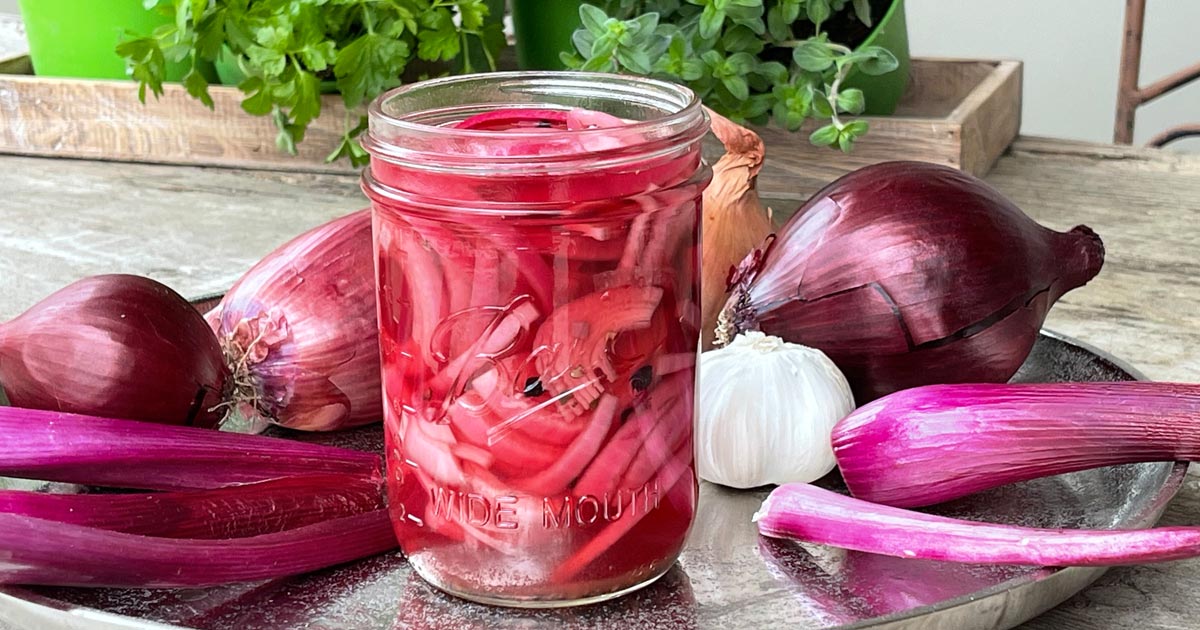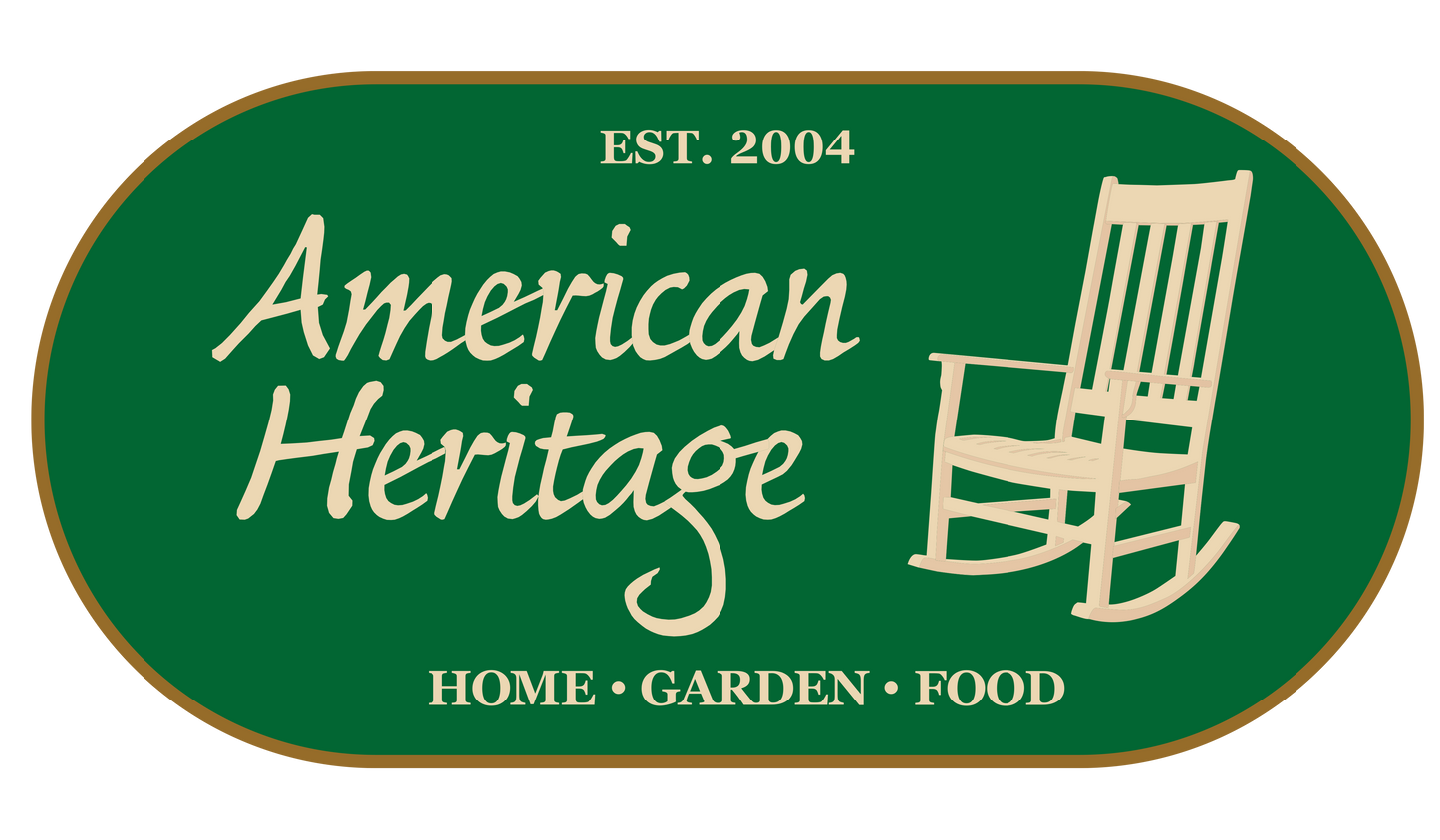
Pickling vegetables – or Pickling , as it is called in the USA, is a way to preserve the vegetables preserve and seasoning. Pickling is not only suitable for preserving vegetables and giving them a special taste to lend – it can even help save food.
Pickling is extremely popular in the USA - and more and more people here are getting a taste for it (in the truest sense of the word)! The trend is clearly moving towards Do-it-yourself - in the style of a romantic country house life. Just think of all the colorful, crisp vegetables that have just been harvested. To give the vegetables a special flavor - and to make them last longer - they only need to be pickled. You want to know how to How to pickle vegetables properly so that you can enjoy them at a later date? We will show you how Pickling functions!
The Story of the Pickling
Before we look at the Pickling vegetables in detail, we would like to briefly look at the Past travel and clarify where the pickling actually comes from. The word “Pickle” actually comes from the Dutch word "pekel" or the North German word "pókel", which means "salt" or "brine". Both are used in pickling important components . The vegetables are pickled in a salty brine or in an acidic solution (usually vinegar) with various spices. In the salty or acidic environment no unhealthy bacteria can survive, so the pickled vegetables remain longer lasting . Historically, pickling was a Need to provide food for Sailors and travelers In addition, the pickled vegetables supplied families in colder months with food. Pickling cucumbers began approximately 4,000 years ago in India . This made it possible to preserve food, which was a great advantage, especially during long sea voyages. Today, pickled foods are mostly consumed for their spicy taste This can be varied depending on the addition of different herbs or spices.
Pickling – how does pickling vegetables work?
Food can be preserved for longer because the acid in the vinegar preservative Firm vegetables (more information on this in the next section) are particularly suitable for this purpose. The acid contained in the vinegar prevents Bacteria and microorganisms growth, so that the pickled vegetables last longer. According to the Federal Center for Nutrition, harmful bacteria are inhibited at an acid concentration of 2% to 9% However, this high concentration is not enough for our taste much too acidic . For this reason, it is usually Salt and Sugar (alternatively, some honey will do) are added. These resemble the high acidity something and at the same time Preservative . The vegetables to be pickled should be cooked or dried – this also extends the shelf life. The pickled vegetables are best stored in a dark, dry place . That's about it two weeks You can also store the pickled foods in the refrigerator – this can extend their shelf life by several months (if pre-cooked and depending on the vinegar content). Opened jars should be within a few days be used up.
Before you start pickling, it is advisable to check whether the vegetables fresh and in a good condition Peel the vegetables you want to pickle, if necessary, and wash them thorough Then, depending on the recipe, the vegetables are blanched, boiled or sprinkled with salt while raw, so that the vegetables drained In the next step, put the vegetables into a airtight preserving jar . We use the Ball Mason Jars – classic American. Please reach not on metal containers. The acid contained in the vinegar attacks the metal, causing harmful substances can pass into the pickled food.
To make the broth, bring vinegar and, if necessary, water to reduce the acidity, to a simmer with various spices. Classic spices for pickling include Pepper, cloves, coriander or mustard seeds . If you prefer it a bit hotter or spicier, you can also Garlic or chili peppers Then pour the hot broth into the preserving jar or Ball Mason Jar with the vegetables. Make sure that the vegetables to be pickled complete covered by the brew. Let the jar cool down and then store it – hermetically sealed – in the refrigerator.
Which vegetables can be pickled?
When asked which vegetables are particularly good for pickling, there are actually There is no clear answer . In principle, almost any kind of vegetable can be pickled. However, it works particularly well with solid vegetables . These include zucchini, peppers, carrots, cucumbers, garlic, beetroot, pumpkin, or radishes. But also tomatoes, peppers, jalapenos, and even mushrooms – which do not fall under the category of vegetables – are excellent for pickling. Take a look at lecker.de or eat-this.org There you will find some recipes and Inspirations for your own creations. You can also pickle onions. Further down in the article you will find the personal favorite recipe by Sabine Ryan, which you absolutely should try!
Preserving vegetables – how long do pickled vegetables last?
How long pickled vegetables last depends on several factors dependent. On the one hand, the Acidity of the vinegar used plays an important role. The higher this value, the longer the pickled vegetables will last. Another important point is the Jars and lids used for pickling. These should completely clean Ideally, you should clean them thoroughly beforehand with Dishwashing liquid and rinse them with hot water. Alternatively, you can also clean the preserving jars or Ball Mason Jars in the dishwasher. If you wash the jars by hand, it is best to let them dry upside down on a clean tea towel. Ingredients such as honey, salt, sugar, vinegar, or alcohol, which can be used when pickling vegetables, also help to preserve the vegetables longer and to Another important point that can extend the shelf life enormously is the Preserving the vegetables . Preserved vegetables can be stored for several months – provided you have used flawless vegetables and clean jars that can be sealed airtight. We would like to conclude with some Don'ts on the subject of pickling, i.e. things that should be avoided at all costs:
- Using too little sugar: Sugar is a natural preservative and should therefore be used for pickling
- Use damaged vegetables: Vegetables that are to be pickled should fresh and ripe be – as soon as you discover damage or already rotting spots, you should stop pickling
- Dirty jars: Make sure that the preserving jars clean and there are no food scraps or other Contamination – these can greatly influence the shelf life
- Too low a temperature during pickling: As you know, heat kills germs and bacteria. For this reason, the filling temperature should be at least 80 °C At lower temperatures, germs can enter the glass and spread and multiply despite the vacuum
- Defective closures & lids: Make sure that the Closures of the preserving jar or the Ball Mason Jars intact If the seal, which is subject to stress during every use, is porous, the jar will not be able to create a vacuum after canning
- Incorrect storage: Pickled vegetables should be stored in a dry, cool, dark place (preferably at a constant temperature). A pantry, a cellar or alternatively the refrigerator is recommended.
Pickled vegetables - these are the benefits of pickling
The so-called Pickling not only preserves vegetables and makes them more durable, it also gives them a spicy taste . In addition, pickling vegetables relatively easy and also claims It takes very little time , so everyone can try it out. It is also nice that you decide for yourself can decide what goes into the jar and what doesn't. You decide which vegetables and spices you want to add. This brings us directly to the next point – the taste. Pickled vegetables are simply delicious! You can also significantly influence how your pickles taste at the end of the day. Do you prefer classic or can it be a little sharper Try different spices until you find the one that suits you best. One of the most important advantages – at least for us – is that you Save vegetable scraps and thus reduce food waste a little.
Recipe idea: Red Pickled Onions by Sabine Ryan
Speaking of onions – Sabine Ryan , Executive Director of American Heritage, who is herself a great passion for pickled vegetables, shares with us her closely guarded recipe of the red pickled onions. Curious? For the recipe you'll need the following ingredients:
- a large red onion
- 2 cups apple cider vinegar
- 1 large teaspoon honey
- 1 tsp salt
- 3 cloves of garlic
- Colorful peppercorns
In the first step, peel the fresh, red onion and remove possible dirt . Cut the onion into rings or pieces and put the other ingredients in a small saucepan. Let the broth simmer for about 10 minutes simmer. Then put the sliced onion in a preserving jar or in a Ball Mason Jar (if you like it as American as we do). Now pour the heated broth over the onions so that they completely covered Now the jar just needs to be sealed airtight so that the inside vacuum can occur. After the glass completely cooled you can store it. Sabine Ryan recommends the Storage in the refrigerator and consumption of the pickles within two weeks.
The pickled onions taste great with salads, on sandwiches, with cheese and of course on homemade burgers . The pickles can also be added to various stir-fries. Enjoy!
Buy pickles instead of pickling vegetables yourself
The undisputed classic , which is often mistakenly referred to as Pickles is equated, is pickled cucumbers . If you do not want to pickle vegetables yourself, but still do not want to miss out on the delicious taste of cucumbers or simply want to get new inspiration in the matter of pickling, we recommend the different flavors our pickles from SuckerPunch . The company produces its pickled cucumbers with love and is guaranteed to please your taste buds. Just try it for yourself:


